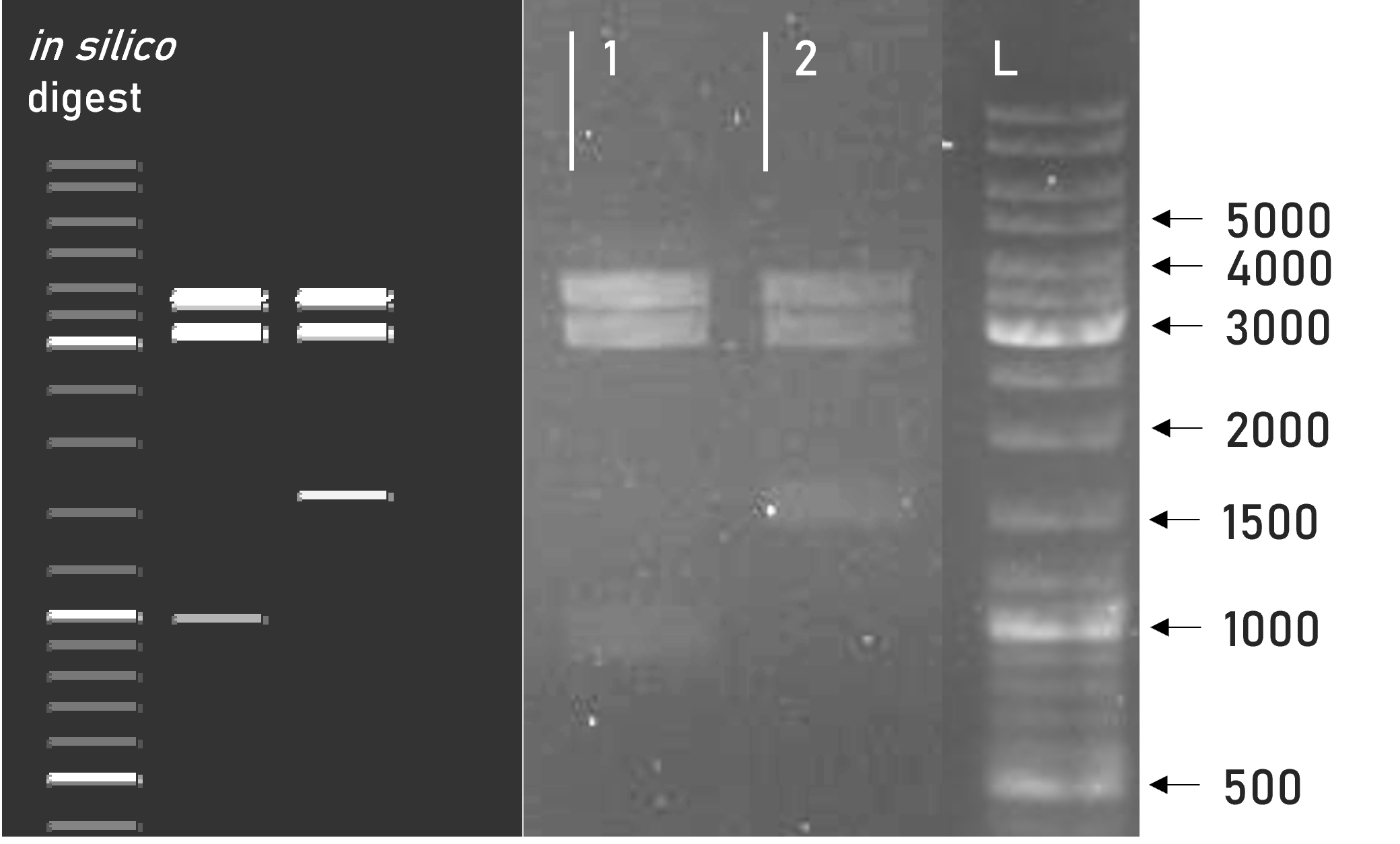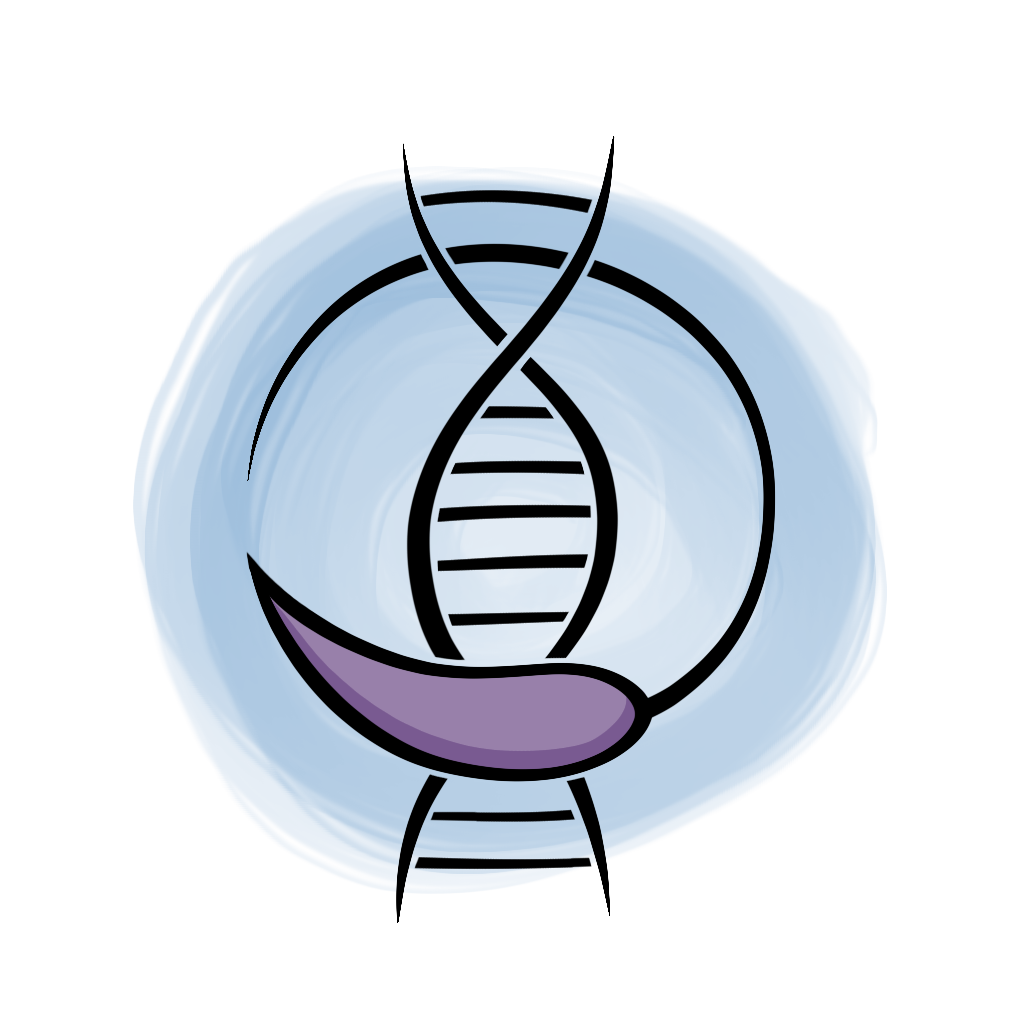Part:BBa_K3781006
Strep-tag II + HRV 3C Motif, MocloMania B3
This part codes for a Strep-tag II that is fused to a downstream HRV 3C protease recognition motif.
The Strep-tag II is part of a protein purification system that in its principle it relies on the high affinity binding of the homo-tetrameric protein streptavidin, first isolated from the bacterium Streptomyces avidinii, to the vitamin biotin.[1] The binding of these two biomolecules is one of the strongest non-covalent interactions observed in nature and inspired the creation of many derivatives with even further enhanced binding capabilities.[2] German biotech company IBA Life Sciences developed a synthetic eight amino acid peptide called Strep-tag II which binds to the specifically engineered streptavidin derivative Strep-Tactin with high specificity.[3] Thus, fusing a gene of interest to a Strep-tag II allows for efficient purification of the target protein by affinity chromatography over immobilized Strep-Tactin. The bound target protein can later be eluted with desthiobiotin.
The Strep-tag II encoded in this part is fused to a recognition site for the human rhinovirus 3C protease, a cysteine protease that usually mediates the disruption of host cell transcription during viral cell infection.[4] It binds and cleaves its recognition site with high specifity and, when its motif is fused with a tag, can be used for recovery of tag-free target protein after purification.
size 2.3 kDa
function affinity purification tag
amino acid sequence WSHPQFEK RGSG LEVLFQ/GP
cloning position B3
plasmid backbone pICH41258
Data
We were able to successfully clone this basic part into its respective L0 plasmid backbone and to confirm the integrity of the L0 construct via restriction digest and gel electrophoresis, see Figure 1. Furthermore, we were able to include it into a L1 construct, proving its correct adaptation towards MoClo assembly, see Figure 2. This part has been transfected into Leishmania, but it has not yet been tested for expression and purification functionality.
-
 Figure 1 | Test digest of L0 B3 constructs
Figure 1 | Test digest of L0 B3 constructs
1 | pICH41258 | BsaI | 2247 + 598 bp
2 | L0_RBD_B3 | BsaI | 2247 + 675 bp
3 | L0_3xFLAG_B3 | BstEII + SapI | 1565 + 581 + 212 bp
4 | L0_Myc_B3 | BstEII + SapI | 1565 + 581 + 167 bp
5 | L0_GST_B3 | BsaI | 2247 + 684 bp
6 | L0_Strep_B3 | BstEII + SapI | 1565 + 581 + 167 bp
7 | L0_8His_B3 | BstEII + SapI | 1565 + 581 + 167 bp
L | Thermofischer GeneRuler Plus Ladder [bp] -
 Figure 1 | Test digest of L1 constructs using HindIII
Figure 1 | Test digest of L1 constructs using HindIII
1 | L1_sAP_Strep_RBD_Strep8His | 3792 + 3198 + 1005 bp
2 | L1_sAP_GST_RBD_Strep8His | 3792 + 3198 + 1623 bp
L | Thermofischer GeneRuler Plus Ladder [bp]
The MocloMania collection
This basic part is part of the MocloMania collection, the very first collection of genetic parts specifically designed and optimized for Modular Cloning assembly and recombinant protein expression in the protozoan parasite Leishmania tarentolae.
Are you trying to express complexly glycosylated proteins? Large antibody side chains? Human proteins that require accurate post-translational modification? Then Leishmania might be just the right organism for you! Leishmania tarentolae’s glycosylation patterns resemble those of human cells more closely than any other microbial expression host, while still delivering all the benefits of microbial production systems like easy transfection and cultivation.[5] So instead of relying on mammalian cell lines, try considering Leishmania as your new expression host of choice!
Our MocloMania collection will allow you to easily modify your protein of choice and make it suitable for downstream detection and purification procedures - all thanks to the help of Modular Cloning. This cloning system was first established by Weber et al. in 2011 and relies on the ability of type IIS restriction enzymes to cut DNA outside of their recognition sequence, hereby generating four nucleotide overhangs.[6] Every basic part in our collection is equipped with a specified set of overhangs that assign it to its designated position within the reading frame. These so-called cloning positions are labelled B2-B5 from upstream to downstream. By filling all positions with the basic parts of your choice, you can easily generate variable genetic constructs that code for the fusion protein of your desire.
We furthermore provide a specifically domesticated Leishmania expression vector, named weird_plex, which will package your fusion construct into a functional transcriptional unit that is optimized for high expression in Leishmania.
The best part? Because of the type IIS restriction properties and the specifity of the generated overhangs, restriction and ligation of your construct can all happen simultaneously in a simple one-step, one-pot reaction. This will safe you a lot of time and frustration in your cloning endeavours!
Do we have your attention? In the table below you can find some basic information on how our cloning system, along with most other MoClo systems, is set up. Please feel free to check out our wiki to find more information on Leishmania and Modular Cloning as well as to understand how this basic part integrates into our part collection. See you there!
| Level | What does this level contain? | antibiotic resistance | Enzyme used for ligation |
| L0 | The foundation to every MoClo construct which are basic genetic units, such as coding sequences, promoters, terminators | spectinomycin | BbsI |
| L1 | Several L0 parts assembled into a functional transcriptional unit, e.g. consisting of promoter, coding region and terminator | ampicillin | BsaI |
| L2 | Multiple transcriptional units added into one multi-gene construct, e.g. a protein of interest fused to a selection marker | kanamycin | BbsI |
Sequence and Features
- 10COMPATIBLE WITH RFC[10]
- 12COMPATIBLE WITH RFC[12]
- 21COMPATIBLE WITH RFC[21]
- 23COMPATIBLE WITH RFC[23]
- 25COMPATIBLE WITH RFC[25]
- 1000COMPATIBLE WITH RFC[1000]
Reference Literature
- ↑ W A Hendrickson: Crystal Structure of Core Streptavidin Determined from Multiwavelength Anomalous Diffraction of Synchrotron Radiation. In: Proceedings of the National Academy of Sciences. 86 (7), 1989, S. 2190–4.
- ↑ Green NM (1975). "Avidin". Advances in Protein Chemistry. 29: 85–133. doi:10.1016/s0065-3233(08)60411-8. ISBN 9780120342297. PMID 237414.
- ↑ https://www.iba-lifesciences.com/strep-tag
- ↑ Amineva SP, Aminev AG, Palmenberg AC, Gern JE (October 2004). "Rhinovirus 3C protease precursors 3CD and 3CD' localize to the nuclei of infected cells". The Journal of General Virology. 85 (Pt 10): 2969–79. doi:10.1099/vir.0.80164-0. PMID 15448360
- ↑ Langer T, Corvey C, Kroll K, Boscheinen O, Wendrich T, Dittrich W. Expression and purification of the extracellular domains of human glycoprotein VI (GPVI) and the receptor for advanced glycation end products (RAGE) from Rattus norvegicus in Leishmania tarentolae. Prep Biochem Biotechnol. 2017 Nov 26;47(10):1008-1015. doi: 10.1080/10826068.2017.1365252. Epub 2017 Aug 31. PMID: 28857681.
- ↑ Weber E, Engler C, Gruetzner R, Werner S, Marillonnet S (2011) A Modular Cloning System for Standardized Assembly of Multigene Constructs. PLoS ONE 6(2): e16765. https://doi.org/10.1371/journal.pone.0016765
| None |

